Chipping
OS Grid ref:- SD623434
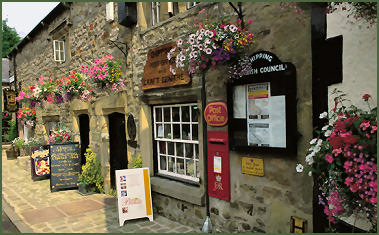 Chipping is a highly a picturesque village, situated at the heart of Lancashire's scenic Ribble Valley, on the south-western edge of the Forest of Bowland in Lancashire, an Area of Outstanding Natural Beauty.
Chipping is a highly a picturesque village, situated at the heart of Lancashire's scenic Ribble Valley, on the south-western edge of the Forest of Bowland in Lancashire, an Area of Outstanding Natural Beauty.
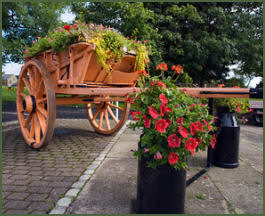 An ancient settlement, Chipping is mentioned in the mentioned in the Domesday Book of 1086 where it is referred to as as Chippenden, the name derives from the Anglo-Saxon word 'ceapen' meaning market.
An ancient settlement, Chipping is mentioned in the mentioned in the Domesday Book of 1086 where it is referred to as as Chippenden, the name derives from the Anglo-Saxon word 'ceapen' meaning market.
In the early twelfth century the village was owned by the de Lacy family and from that time it was included in the lands of the lordship of Clitheroe.
Joseph Delaney's Book 'The Wardstone Chronicles' features the village of Chipenden, which is based on Chipping. The village has been the winner of several 'Best Kept Village' competitions, including the village section of the Britain in Bloom competition in 2009.
Chipping is a designated conservation area with many characterful stone cottages and a seventeenth century school and almshouses.
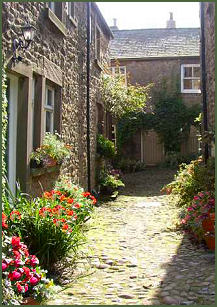 Chipping Craft Centre in Talbot Street holds the distinction of being the property which has been used as a shop for the longest continuous time in Britain. The shop and adjoining house were built in 1668 by the philanthropist John Brabin, a London cloth merchant and dyer.
Chipping Craft Centre in Talbot Street holds the distinction of being the property which has been used as a shop for the longest continuous time in Britain. The shop and adjoining house were built in 1668 by the philanthropist John Brabin, a London cloth merchant and dyer.
In is will, Brabin left requests to create a trust providing relief to the poor and education for the young and in accordance with his wishes, the “old school house” and the “alms houses”, both Grade II listed buildings, were completed in 1684, a year after his death.
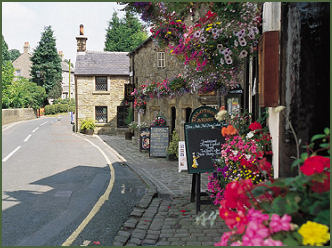 The Sun Inn, one of the village pubs, is reputed to be haunted by the ghost of Lizzie Dean, a barmaid, who hanged herself in the attic of the pub after seeing her fiancé marrying another. The local vicar refused her request to be buried beneath St Bartholomew’s path (to make her lover walk over her to get to church). The pub, which has featured on the popular television programme 'Great British Gosts', sells traditional ales and a range of tasty meals.
The Sun Inn, one of the village pubs, is reputed to be haunted by the ghost of Lizzie Dean, a barmaid, who hanged herself in the attic of the pub after seeing her fiancé marrying another. The local vicar refused her request to be buried beneath St Bartholomew’s path (to make her lover walk over her to get to church). The pub, which has featured on the popular television programme 'Great British Gosts', sells traditional ales and a range of tasty meals.
The village church of St Bartholomew dates back to 1240 although a wooden church has occupied the present site since Saxon times. Its first known Rector, Robert of Chepindale, was recorded in a document of Lancaster Priory.
The tower was added in around 1450 and the rest of the church was rebuilt in 1506.
St. Bartholomew's contains a twelfth century piscina and a plague stone, the holy water stoups date from 1450. The curious heads carved on one of the stone pillars in the north aisle are thought to have been carved in the fourteenth century.
In 1879 the Belgian people made a gift of a chest to St Bartholomews Hospital in London which is now housed in the church. The fine East window in the Wolfhouse Quire was donated in 1967, in memory of John Berry. A sundial in the churchyard is dated 1708, but its base is said to be much older.
St. Bartholomew's Church, Chipping
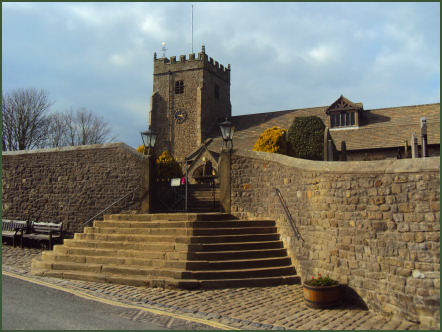
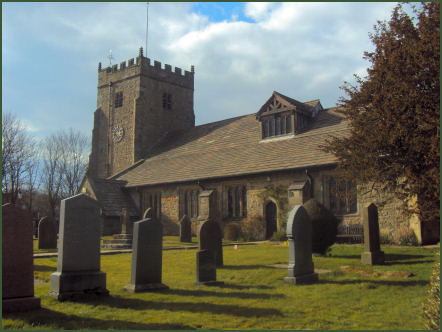
Nearby Bowland Wild Boar Park offers a brilliant and fun day out for all the family and is home to a range of wildlife including Deer, Llamas, Red Squirrels, Goats, Peacocks and Barn Owls. The park has 30 acres of woodland to explore with attractive walks alongside the River Hodder. It also features tractor rides, a play area, lamb Llama and deer feeding. During the summer months visitors can bottle feed the lambs.
A walk from Chipping to Wolf Fell
Distance - around 5 miles
Duration - about 3 hours
*Commencing at the main street in Chipping, proceed by the side of St. Bartholomew's Church and bear right, passing through the works of H.J. Berry. Take the track at a stile to the right of the pond. Proceed uphill following the line of the fence on your right, cross a stile, then go down to a footbridge over a stream and follow the track to Windy Hill.
* Turn left by the side of a barn and continue along a grassy track, cross a stile and follow the line of the fence on the right and then a wall. On arriving at a signpost, take the diversionary footpath is found in front of the house and continue along a stone wall. A stile on the left leads to the path to Saddle End.
* On reaching Sadleads eventually to the ladder stile. (40 min) At the wire fence the ladder style leadle End turn right before the farmyard. After passing the gate continue straight on, taking the track up Saddle Fell, cross a ladder stile into the Wolf Fell Access area. The path then proceeds uphill to a further a ladder stile and proceed due west towards Paddy's Pole. Continue along the the escarpment to Parlick.
*From Parlick follow the path down to Fell Foot and proceed along the road to a T-junction. Turn left and walk diagonally across a field to a stile. Continue over the next field to a stile and then on to Fish House. On reaching a road turn left and pass through a farmyard and continue straight ahead. Cross a stream and pass through a gap in a wall. Continue along the path to the road leading to Springs House. At the road turn left and continue back along the road to return to Chipping.
Nearby Places of Interest
Pendle Heritage Centre set in a range of tastefully restored Grade II Listed farm buildings and .consists of a museum, art gallery, gift shop, tea-room, an eighteenth century walled garden, cruck barn with farmyard animals and tourist information.
Whalley Abbey- founded by Henry de Lacy, third Earl of Lincoln on the 4th April 1296.
Lancaster Castle founded in the tenth century
Ashton Memorial in Williamson Park, Lancaster was commissioned by James Williamson, Baron Ashton as a tribute to his second wife, Jenny and was built between 1907 and 1909.
Butterfly House, Lancaster
Clitheroe Castle-Norman castle keep and museum, said to be one of the oldest buildings in Lancashire, and one of the smallest keeps in England.
